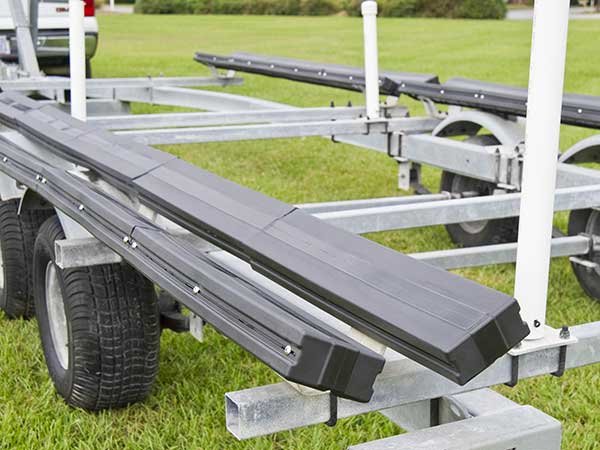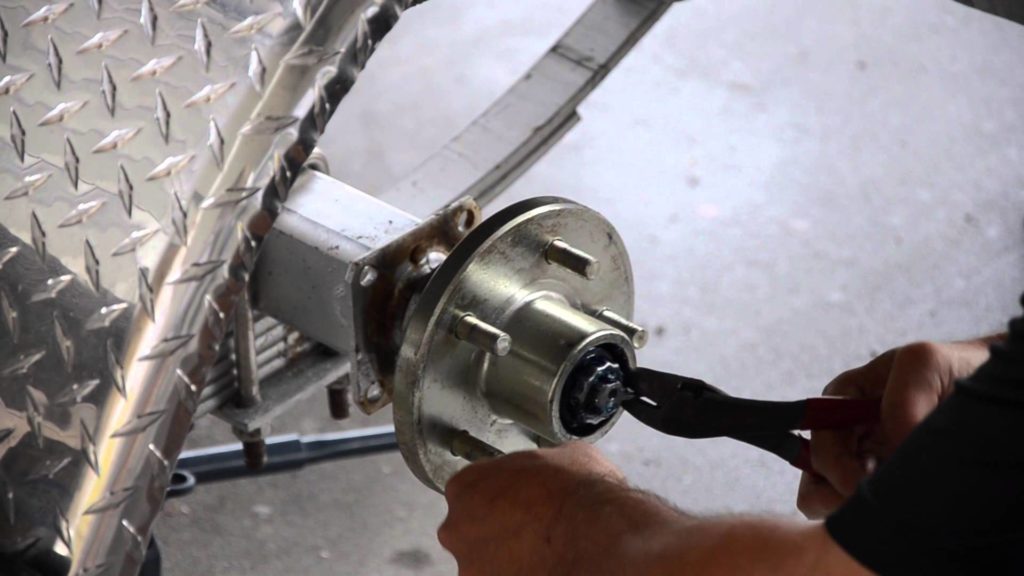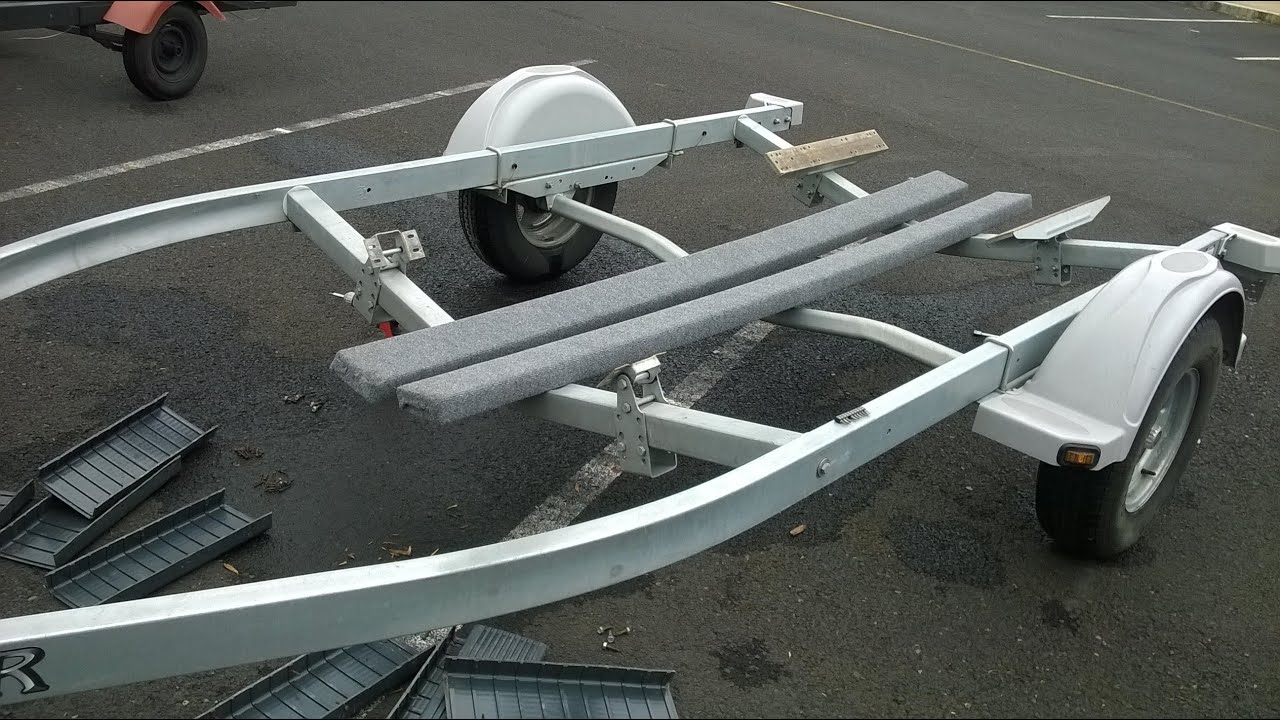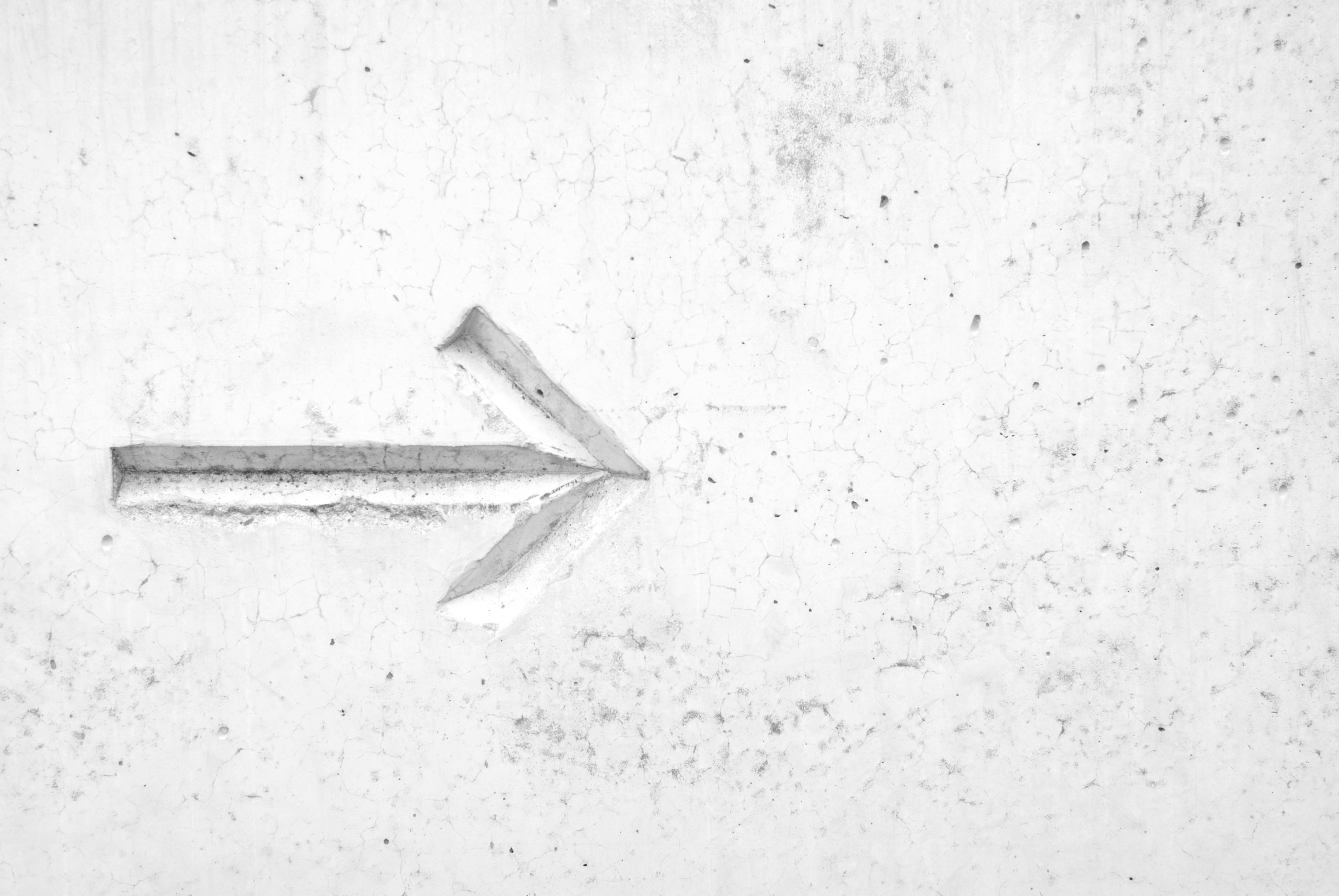TRAILER STRUCTURE

Material
Boat trailers are generally constructed with galvanized steel or aluminum. A majority of boat trailers are made from aluminum because this material is less prone to corrosion. This option is more expensive, but likely to withstand water and weather conditions long-term. Unless boating solely in freshwater, we recommend going with an aluminum trailer.
Axles
Trailers can have a variety of different axles. Depending on the boat’s size and weight, you can upgrade the number of axles, as well as their size. Installing multiple axles is more expensive initially and for long-term maintenance purposes. They will, however, help the trailer track more effectively.
There are two types of axles to choose from – drop or straight. Drop axles are closer to the ground, which increases stability when trailering. If you drive down bumpy roads, however, the straight axles will give more ground clearance.
Leaf Springs
It is important to get a quality leaf spring setup that can handle the weight of your boat. Most commonly, we see either three or five-leaf springs on a trailer. Five-leaf springs are worth the extra investment if the boat weight is substantial.
Brake Systems
Most trailers will require some sort of brake system depending on your boat’s size and your state’s requirements. There are two types of brakes to choose from – disc and drum. Disc brakes are generally preferred when trailering larger loads because of their increased friction. In addition, freshwater flushing is relatively easy with this brake-type. On the other hand, drum brakes are the preferred choice for lighter loads, generally 3,500 pounds or less. They require lower hydraulic pressure to activate.
Next, it’s important to choose your braking mechanism – hydraulic surge brakes or electric brakes. Hydraulic brakes use brake fluid to transfer pressure from the controlling system to the actual braking system. Electric brakes are activated by an electrical output when the brake pedal is used. Electric brakes are becoming more popular because they are activated in real-time.
Trailer Bunks
Bunks help to support the boat’s hull, while also making loading and launching much easier. They are aligned with linear stringers to help distribute weight appropriately and support the boat evenly.
---------------
MAINTENANCE TIPS

Consistent care and maintenance are vital for long-term trailer use. Without practicing proper maintenance protocol, your trailer is more susceptible to corrosion and breakage. Follow our maintenance tips below.
Rinse Your Trailer
Rise the trailer with freshwater with each use. This tip is especially important if you are trailering mainly in saltwater areas. Constant exposure to saltwater is a recipe for corrosion.
Always Treat Rust
If any rust arises, remove it with a wire brush and a galvanizing component as soon as possible.
Wheel Bearings
The trailer’s wheel bearings are one of the most important components when trailering your boat in and out of the water. To keep them in good health, grease them before every boating season and replace them when necessary.
Inspect All Trailer Components
Inspect the remaining parts of the trailer, including the bunk, brakes, lights, tires, and bow straps frequently.
Coupler and Tongue Jack
Lubricate the coupler and tongue jack a few times each season. Check to make sure the fastener pin is secure, and the surrounding bolts are tight.
Replace When Necessary
Finally, replace any faulty components when necessary.




